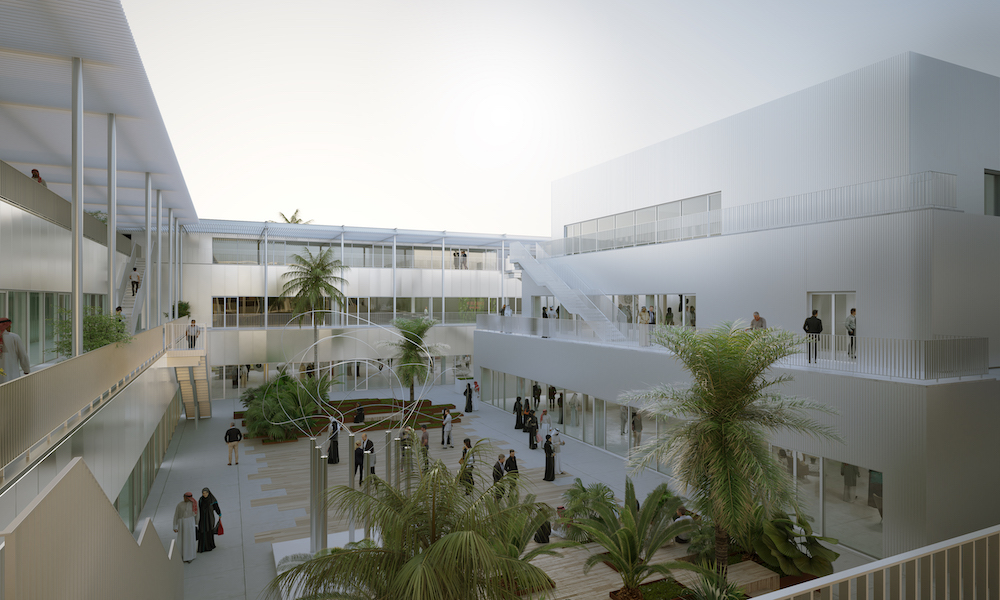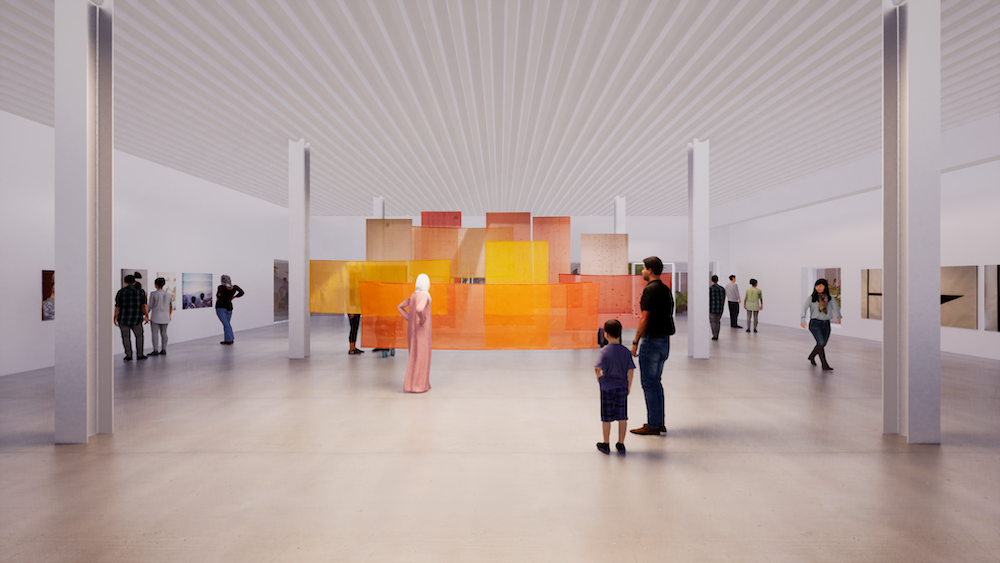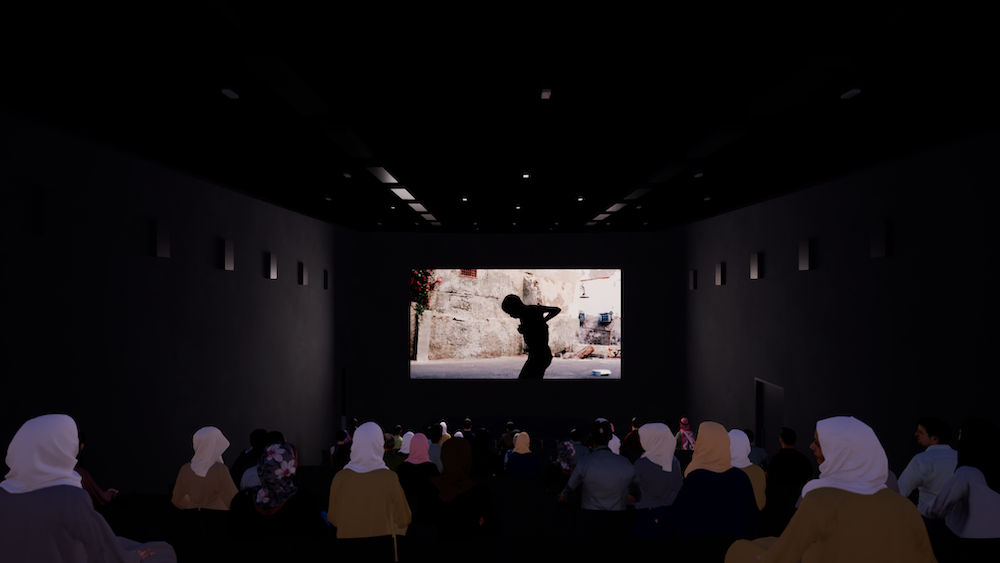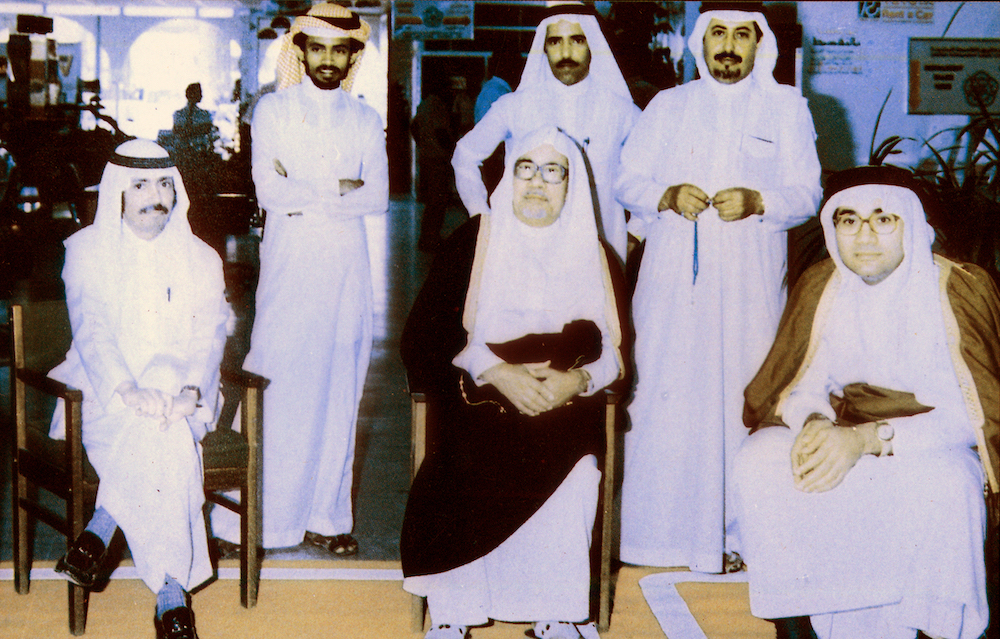DUBAI: In another win for the Saudi art scene, the long-awaited Hayy Jameel has announced it will finally open the doors to its sprawling 17,000-square-meter cultural complex in Jeddah in winter 2021. Hayy Jameel, which derives its name from the Arabic word for “neighborhood,” intends to be exactly such — a space for collaboration and creative exchange. The new cultural complex adds to the growing list of new cultural enterprises launched in the Kingdom over the last several years as Saudi Arabia continues its mission to push for a “creative economy.”
“Hayy Jameel is set to be a home-from-home for Jeddah’s creative community — a dynamic, multidisciplinary complex created specifically to support the art scene and nurture next-generation talent,” Antonia Carver, director of Art Jameel, told Arab News.

Hayy Jameel three-storey render. Supplied
“This is a hugely exciting, new era for Saudi culture, in general. Now, complementing and supporting the dynamic and large-scale developments led by the Ministry of Culture and government-affiliated entities, we have the first major not-for-profit, private sector contribution and one with a wholly civic purpose,” she added.
Located in a three-story edifice in the residential area of Al-Mohammadiyyah in north Jeddah, Hayy Jameel will include the launch of Hayy Cinema, a 200-seat cinema that marks Saudi Arabia’s first independent cinema; Hayy Arts, a 700-square-meter exhibition center; Hayy Studio, an artists’ studio; Fenaa Hayy, a multi-purpose space for performances, workshops and talks; Hayy Learning, a community-focused education platform featuring a program that offers in-person and virtual learning, research and apprenticeships; and Hayy Residents, a space that will bring together pioneering creative businesses from Jeddah, ranging from contemporary art and performance to design and publishing, as well as baking institutes, new cafes and restaurants.

The the interior space is open and centered around Saha. Supplied
The complex is designed by waiwai, a Dubai and Tokyo-based architectural studio, also the creator of the Jaddaf Waterfront Sculpture Park in front of Dubai’s Jameel Arts Center. The cinema is designed by Jeddah-based Bricklab, a commission awarded to the firm after an international design competition staged by Art Jameel.
Jeddah has long been known for its creative scene, with its annual 21’39 festival that has taken place throughout the city since 2013; its Athr Gallery and Hafez Gallery, two of the Kingdom’s most renowned art galleries; and its host of emerging and established Saudi artists. The city will also play host to the inaugural Red Sea International Film Festival in November 2021. What has been lacking in the scene, however, are spaces in which to create and incubate artistic production.

Hayy Arts render. Supplied
In many ways, Hayy Jameel has arrived as the missing ingredient in Jeddah’s cultural mission. It is distinct from Dubai’s Jameel Arts Center in that its purpose is not solely to act as a museum or place to exhibit the Jameel family collection but to nurture cross-cultural dialogue and creative production.
“We think of Jameel Arts Center as a contemporary visual arts museum and Hayy as a multidisciplinary creative hub,” added Carver. “Both embrace creative dialogue, while Hayy focuses more on artistic production.”

Hayy Cinema render. Supplied
Such ideas are reflected in its architecture. Its three-story structure is characterized by tall façades that reflect the intimacy of a private home, while the interior space is open and centered around Saha, a communal courtyard meant to be a re-interpretation of the traditional courtyard typology with surrounding landscaping rooted in sustainable and green practices. The structure’s airy ambiance is supported by natural light, which streams in from all sides, further enhancing the space as a place for easy dialogue and creation. The building uses a steel structure with aluminum cladding and concrete flooring — elements that offer flexibility to the spaces, allowing them to be used in a versatile fashion for exhibitions, events, workshops and more.

Saha, a communal courtyard meant to be a re-interpretation of the traditional courtyard. Supplied
Hayy’s architecture and design are already the recipients of numerous architectural accolades, including Gold in the Hong Kong Design Awards; Silver in the New York Design Awards; and the Honor Award for Exceptional Design by the American Institute of Architects’ Middle East chapter. It has also been nominated for the 2A Continental Architectural Award as well as the London Design Awards.
Hayy’s inaugural show titled “Staple: What’s on your plate?” is co-curated with London-based partner the Delfina Foundation. Inspired by Jeddah’s diverse demographic, the exhibition will explore the relationship between food and memory, ecology, and place through the works of over 30 artists, thinkers, performers, researchers, filmmakers, and other creative practitioners.
The kickoff date for such conversations is set for November 2021 and will continue until April 2022, supported by a public program of talks, performances, and educational and film programs, with contributions from regional and international artists. Workshops will also be held for people of all ages, from children to the elderly, proving how art is accessible to all and the creative journey and knowledge acquired through it long-lasting.

Abdul Latif Jameel (center) with management, 1980s. Supplied
Hayy Jameel also marks the 75th anniversary of the Jameel family's global philanthropy.
Headquartered in Saudi Arabia and the UAE, the Jameel family has long been one of the Arab world’s biggest patrons. For decades, Art Jameel has supported artists and creative communities across the Middle East through exhibitions, commissions, research, and community-building, propelled by the belief that the arts can be open and accessible to all. Hayy is the next chapter in Art Jameel’s journey.
“Art Jameel was born in Jeddah, and Hayy is our most ambitious project to date,” Fady Jameel, chairman of Art Jameel, told Arab News. “This homecoming, at a time of unprecedented local interest and investment in the arts, is such a significant milestone moment for our family.”





















